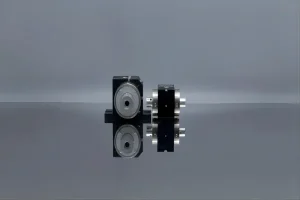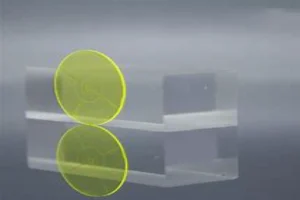Introduction to Nonlinear Crystals in Optical Physics
In the dynamic field of optics and photonics, nonlinear crystals stand as paramount tools, used in diverse technological and scientific applications. They have the unique capability to manipulate light in ways linear materials can’t, leading to intriguing phenomena like second-harmonic generation (SHG). This article will delve into the world of nonlinear crystals, revealing their applications, benefits, and untapped potential.
Understanding Nonlinear Optics and Second-Harmonic Generation
Nonlinear optics, a subset of optical physics, explores light behavior in nonlinear media where the polarization density responds non-linearly to the electric field of the light. Among the plethora of nonlinear optical phenomena, second-harmonic generation shines prominently, a process where two photons at the same frequency combine to generate a new photon at double the frequency, effectively halving the wavelength.
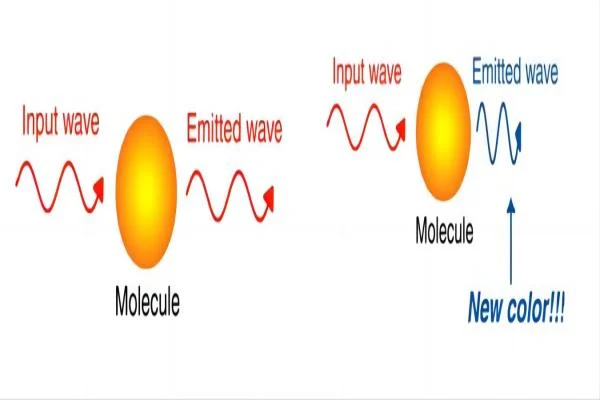
Pivotal Role of Nonlinear Crystals in Optics
In the realm of optical physics, nonlinear crystals are instrumental in fostering a host of nonlinear optical phenomena, with second-harmonic generation (SHG) being the most prominent. This article expands on the applications and benefits of using nonlinear crystals such as Beta-Barium Borate (BBO), Lithium Triborate (LBO), and Potassium Titanyl Phosphate (KTP), focusing on SHG and other nonlinear optical effects.
Beta-Barium Borate (BBO) Crystals
Second-Harmonic Generation and Beyond
When delving into the vast arena of nonlinear optics, it’s impossible to overlook the crucial role of Beta-Barium Borate (BBO) crystals, widely recognized for their superb nonlinear coefficients and exceptional phase-matching capabilities. By leveraging these extraordinary attributes, BBO crystals make frequency doubling or second-harmonic generation—a fascinating nonlinear optical process—an efficient and practical reality. This operation involves merging two photons with identical frequencies to form a single photon with twice the frequency, effectively a color change from a longer wavelength (lower frequency) to a shorter one (higher frequency). In the world of lasers, particularly those operating in the ultraviolet wavelength region, this feature is absolutely indispensable. This is largely due to the fact that producing lasers with shorter, ultraviolet wavelengths poses considerable technical challenges and inefficiencies.
With BBO crystals in the equation, however, it’s entirely possible to start with a more manageable longer wavelength laser and then simply double the frequency to achieve the desired ultraviolet output. Yet, the capabilities of BBO crystals extend far beyond second-harmonic generation. In fact, they have also carved out a firm presence in the realm of optical parametric oscillation (OPO). In OPO, an incident photon is converted into two photons with lower frequencies, whose sum equals the original frequency, a process in which phase-matching plays a critical role. Given BBO’s wide phase-matching capabilities, they are an excellent choice for OPO processes, enabling efficient generation of a broad range of wavelengths.
What’s more, BBO crystals also facilitate third-harmonic generation. Similar to second-harmonic generation, third-harmonic generation involves the interaction of photons to produce a photon with thrice the frequency of the original. To achieve this, BBO crystals cleverly combine frequency-doubled light (second harmonic) with the leftover original light (fundamental frequency) to generate light with three times the frequency, or equivalently, a third of the wavelength.
In essence, the distinct properties and versatile capabilities of BBO crystals make them a cornerstone of nonlinear optics, facilitating everything from efficient frequency doubling to wide-ranging optical parametric oscillation and third-harmonic generation. By enabling access to a broad range of wavelengths and making possible the efficient generation and manipulation of ultraviolet light, BBO crystals undeniably unlock a myriad of possibilities in various fields, from advanced laser technology and telecommunications to environmental science and medical diagnostics.
As such, while they have already made significant strides in nonlinear optics, the journey of BBO crystals, particularly in second-harmonic generation and beyond, is far from over; in fact, it has only just begun.
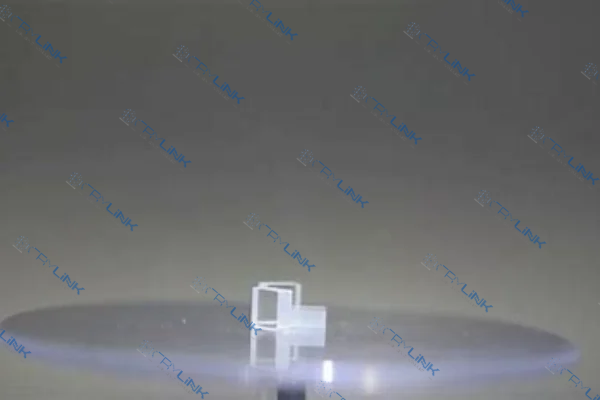
Lithium Triborate (LBO) Crystals
Powering High-Power Lasers and Frequency Mixing
In the complex and dynamic world of nonlinear optics, Lithium Triborate (LBO) crystals have emerged as key players. Recognized for their high damage threshold and extensive transparency range, these crystals demonstrate a profound resistance against the potentially destructive impact of high-intensity laser beams, ensuring they can reliably handle even the most rigorous conditions. This durability, when paired with their wide transparency range that extends from the deep ultraviolet to the mid-infrared spectrum, makes LBO crystals incredibly versatile, positioning them as invaluable resources in a broad spectrum of applications.
One of the most prominent uses of LBO crystals lies in their ability to facilitate second-harmonic generation (SHG) of high-power lasers. As explained earlier, SHG involves the transformation of two input photons into one photon with twice the energy, effectively halving the wavelength of light. This process is integral to the production of high-power lasers, particularly those operating in the ultraviolet or visible spectrum. LBO crystals excel in this role, demonstrating remarkable efficiency and stability even at high power levels. This is attributed not only to their high damage threshold but also to their large effective nonlinear coefficient, which directly contributes to the efficiency of the SHG process.
Beyond SHG, LBO crystals also find widespread application in optical parametric oscillation (OPO) and frequency mixing processes. Similar to BBO crystals, LBOs are favored for their ability to phase-match without angular tuning, which simplifies the alignment process and improves the stability and efficiency of the system. OPO is a process where an incident photon is split into two photons of lower energy, effectively generating new frequencies. Meanwhile, frequency mixing involves the combination of two or more different frequencies to produce new frequencies, including both the sum and difference of the original frequencies. The versatile phase-matching capabilities of LBO crystals make them suitable for both processes, opening up a wide range of possibilities for generating and manipulating light across various wavelengths.
But the capabilities of LBO crystals don’t stop at SHG, OPO, or frequency mixing. Impressively, these crystals can facilitate even higher order harmonic generation, including fourth and fifth-harmonic generation. Here, four or five photons are merged to produce one photon with four or five times the energy, leading to dramatic reductions in wavelength. This ability is particularly beneficial for applications requiring ultra-short wavelengths, such as high-resolution microscopy, lithography, and advanced laser technology.
In conclusion, LBO crystals, with their high damage threshold, wide transparency range, and versatile phase-matching abilities, are truly multifaceted powerhouses in nonlinear optics. They are essential components in high-power lasers, contribute to a wide range of frequency conversion processes, and facilitate higher order harmonic generation, making them a preferred choice in numerous laser systems. As advancements in science and technology continue to push the boundaries of what’s possible, there’s no doubt that LBO crystals will remain at the forefront, powering breakthroughs and shaping the future of optical technology.
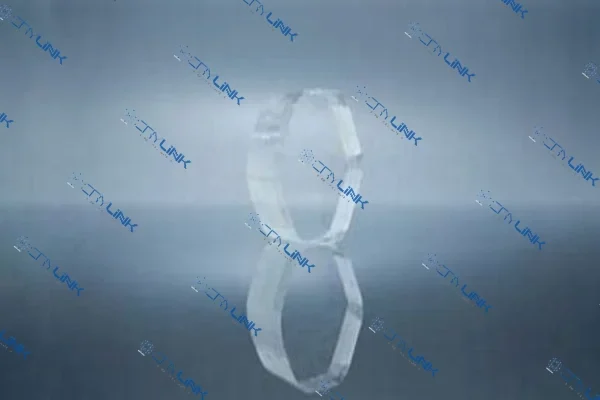
Potassium Titanyl Phosphate (KTP) Crystals
From Second-Harmonic Generation to Optical Parametric Generation
The expansive world of nonlinear optics is brimming with materials that are instrumental in manipulating the properties of light. Among these, Potassium Titanyl Phosphate (KTP) crystals have garnered particular attention for their extraordinary nonlinear optical coefficients. These coefficients essentially determine the degree of interaction between the light and the crystal, ultimately dictating how effectively the optical properties of the light can be altered. Given that KTP crystals boast robust nonlinear optical coefficients, they are highly efficient at fostering optical phenomena, such as second-harmonic generation.
Second-harmonic generation, the process of merging two photons into one with twice the frequency, is a central process in many laser technologies, particularly those designed to produce light in the green part of the spectrum. The robust nonlinear coefficients of KTP crystals enable this process to occur with outstanding efficiency. This, combined with the crystals’ ability to operate at room temperature, makes them a popular choice for compact, cost-effective green laser technologies that are used in a wide array of applications, ranging from laser displays and medical procedures to industrial processing and scientific research.
Beyond second-harmonic generation, KTP crystals also excel in facilitating frequency mixing, a nonlinear process that combines two or more frequencies to produce new ones. By adjusting the input frequencies and the phase-matching condition—a state that ensures efficient energy transfer between the interacting waves—KTP crystals can generate a vast range of output frequencies. This wide tunability lends itself to numerous applications, such as the generation of tunable light sources and the development of secure telecommunications systems.
But perhaps the most striking application of KTP crystals lies in the realm of optical parametric generation. In this process, a high-energy photon is split into two lower-energy photons, with the total energy conserved. As the output frequencies are determined by the energy and momentum conservation laws, by carefully choosing the input frequency and phase-matching condition, one can generate light at virtually any frequency. The high efficiency of KTP crystals in frequency mixing makes them ideal for this application, paving the way for tunable light sources that span a broad spectral range.
Additional factors contributing to the versatility and wide application range of KTP crystals include their significant temperature bandwidth and low walk-off angle. The temperature bandwidth refers to the range of temperatures over which the crystal can efficiently interact with light, while the walk-off angle pertains to the angle at which the generated light beam diverges from the input beam due to differing refractive indices. A significant temperature bandwidth means that KTP crystals can operate efficiently under varying temperature conditions, thereby enhancing the stability and reliability of the system. Meanwhile, a low walk-off angle ensures that the input and generated light beams remain closely aligned, which is particularly important for maintaining high beam quality in high-power applications.
Taken together, the unique characteristics of KTP crystals, from their robust nonlinear optical coefficients and high efficiency in second-harmonic generation and frequency mixing to their significant temperature bandwidth and low walk-off angle, make them a powerhouse in nonlinear optics. By harnessing these capabilities, KTP crystals promise to continue driving advancements across a diverse range of fields, from laser technology and telecommunications to medicine and beyond. With ongoing research and development, the potential applications and benefits of these extraordinary materials are only set to expand, underscoring the pivotal role they play in shaping the future of optical technology.
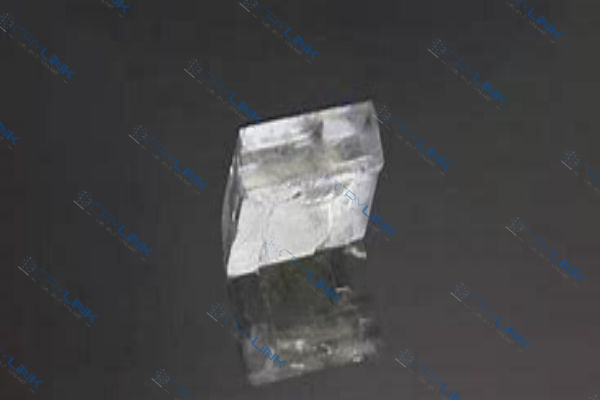
Harnessing Second-Harmonic Generation in Practical Applications
The ability of nonlinear crystals to generate second harmonics has been harnessed across a range of fields, from telecommunications to medicine.
Laser Frequency Conversion
The phenomenon of second-harmonic generation enables the effective conversion of laser frequencies, a process pivotal in laser design and manufacturing. For example, infrared lasers can be transformed into visible light lasers, enhancing their usefulness in diverse sectors.
Optical Data Storage and Telecommunication
In the realm of optical data storage, SHG facilitates increased data density, hence higher storage capacity. In telecommunications, SHG can be employed for efficient wavelength division multiplexing, allowing multiple data streams to be sent simultaneously over the same physical medium, enhancing bandwidth efficiency.
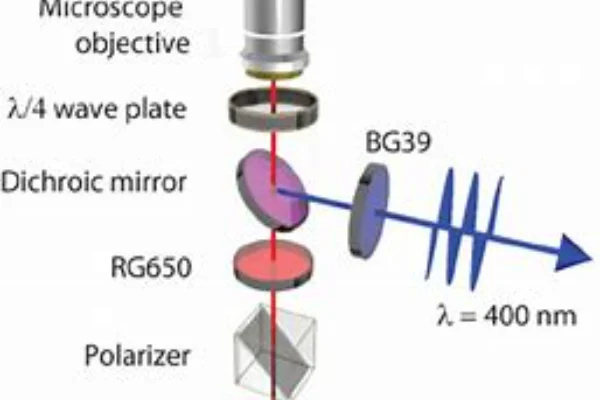
Medicine and Biomedical Imaging
The medical and biomedical imaging fields utilize second-harmonic generation for detailed tissue imaging and diagnosis. As SHG is a coherent process, it can generate high-resolution, three-dimensional images of biological tissues, invaluable in medical diagnostics.
Conclusion
The realm of nonlinear crystals and their applications in harnessing second-harmonic generation represents a fascinating avenue of technological and scientific exploration. With crystals like BBO, LBO, and KTP acting as cornerstones in optical physics, the transformative potential of second-harmonic generation continues to be unleashed across various sectors, from laser technology to biomedical imaging. As research in this field intensifies, the future looks promising for these crystals and their untapped potential.
FAQs
- 1. What is second-harmonic generation?
- Second-harmonic generation is a nonlinear optical process where two photons at the same frequency combine to generate a new photon at double the frequency.
- 2. What are some key applications of second-harmonic generation?
- Key applications of SHG include laser frequency conversion, optical data storage, telecommunications, and biomedical imaging.
- 3. What are the advantages of BBO, LBO, and KTP crystals?
- BBO crystals offer high nonlinear coefficients, LBO crystals have a high damage threshold, and KTP crystals have high nonlinear optical coefficients and a significant temperature bandwidth.
- 4. How does second-harmonic generation contribute to optical data storage?
- SHG can increase data density, resulting in higher storage capacity in optical data storage systems.
- 5. What is the future of nonlinear crystals and second-harmonic generation?
- Future prospects for these technologies include quantum computing, environmental sensing, and improved optical communication systems.
References:
1. Valev, Ventsislav & Clercq, B. & Zheng, X & Denkova, Denitza & Osley, E & Vandendriessche, Stefaan & Silhanek, Alejandro & Volskiy, V & Warburton, P.A. & Vandenbosch, Guy & Ameloot, Marcel & Moshchalkov, Victor & Verbiest, T. (2012). The role of chiral local field enhancements below the resolution limit of Second Harmonic Generation microscopy. Optics express. 20. 256-64. 10.1364/OE.20.000256.
2.Mei Fang.Nonlinear Optics. May 17th 2010 07:59 AM



